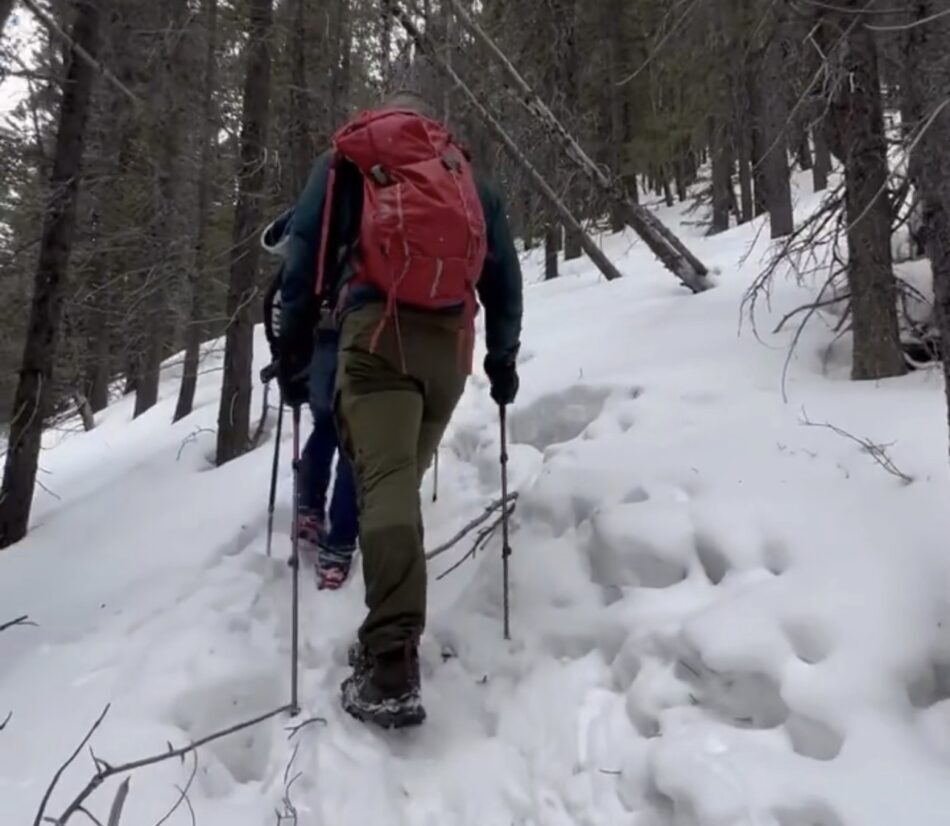Hiking in the winter can be an amazing, beautiful, enjoyable experience… so long as you’re not soaked up to your skivvies from cold, wet snow.
Knowing what pants to wear hiking in the winter can make or break the experience. I recommend buying a winter hiking pant, but there are ways to hike in regular pants during the winter. Snowpants are also a possibility in the winter, though it might make your journey a bit more tedious.
Read below to find out what pants are right for you this winter hiking season!

5 Attributes of Winter Hiking Pants
Many of the things to look for in a good pair of winter hiking pants are the same qualities in regular hiking pants, with the exception of increased waterproofing and warmth retention.
Here are the qualities to look for in a good pair of winter hiking pants:
1. Warmth
Likely the greatest worry when winter hiking is that you won’t stay warm enough. Surprisingly, when you get your heartrate elevated, you’ll actually generate more heat than you’d imagine.
The harder the hike you plan on doing, the less you’ll need thick heat-retaining material. The best way to stay warm during outdoor activity in the winter is by utilizing a layering system.
Start with a good base layer. (Base layers come in different thicknesses – check out my article here to figure out what base layer you need for your winter hiking!)
After your base layer (or two in really cold weather), you can wear a regular pant, such as a legging, or a hiking pant.
If this layer isn’t waterproof, you can add a hard shell to the mix over top of your hiking pants. This hard shell shouldn’t be insulated and should be a thin pair of durable winter snow pants. Full-length side zippers help to slide the pants overtop of bulk and shoes without having to undress.
The vast majority of the winter, I’m more than comfortable hiking in one pair of base layer pants underneath my winter hiking pants, which are waterproof as well.
2. Waterproof
A key feature of winter hiking pants is their ability to be waterproof, or water-resistant at the very least.
Depending on where you plan on hiking, the ground might be very snowy. If you don’t live in a cold climate where snow accumulates, winter seasons tend to be wetter. Either way, pants that don’t get saturated when the weather turns is a key feature to keep you comfortable.
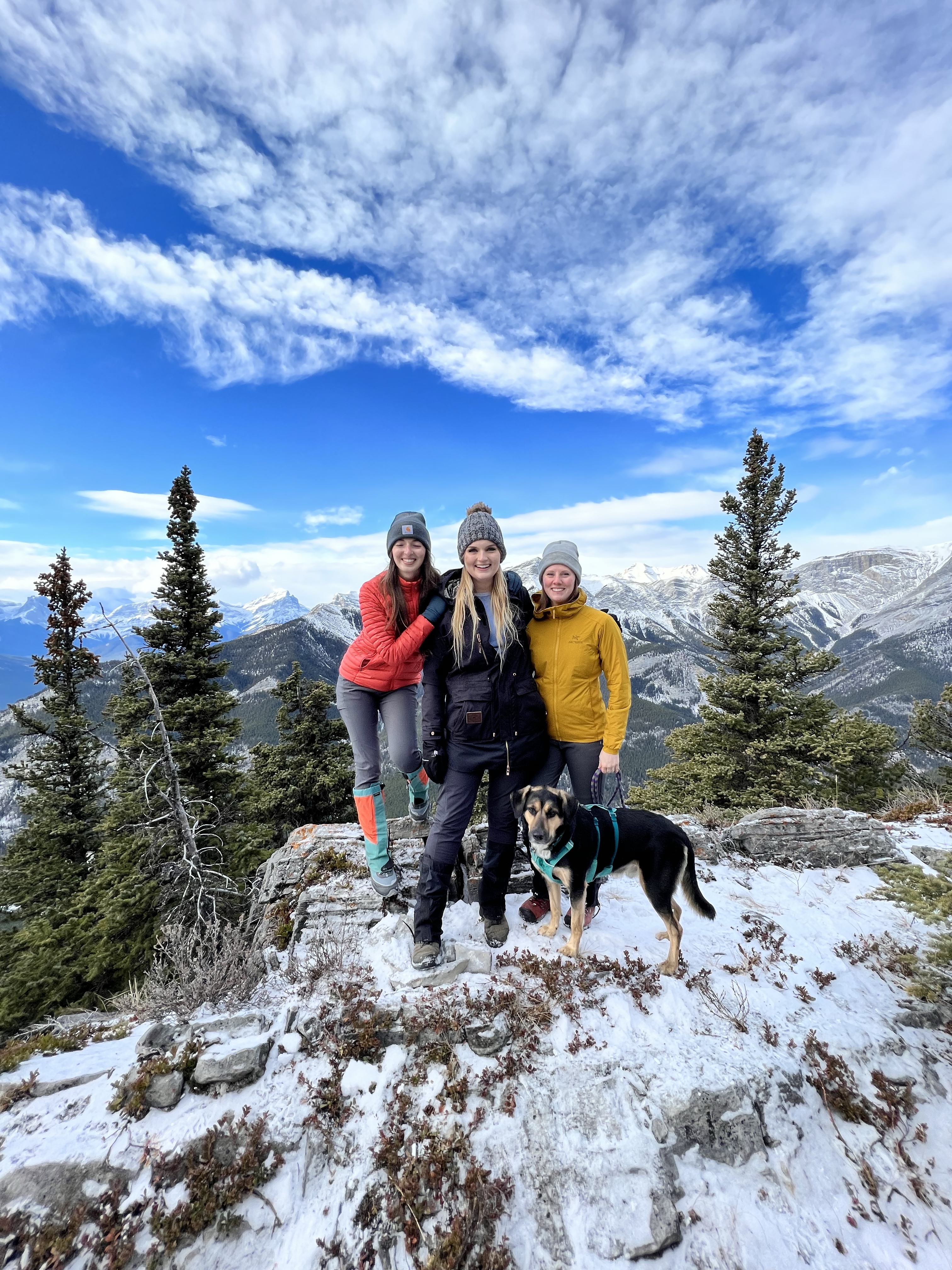
3. Ventilation
With a waterproof coating on the hiking pants, they have a tendency to retain more heat.
While you might think this is a good thing, and to some extent it is, there might come a time in your journey where you start to get too warm.
Overheating in the winter becomes problematic when you start to sweat, as you cause your clothes to become wet from the inside out. Wet clothes in cold weather will cause you to lose body heat quickly. This can even become dangerous if the weather is extremely cold.
Hiking pants with good ventilation help to let some heat escape when you start overheating, without freezing you out completely.
Look for zippers on the sides of your legs or near your groin with mesh lining on the inside. Open these zippers during peak activity to cool down before you start sweating.
4. Flexibility
Hiking in the winter isn’t always an easy task. You still might need to take some big steps, such as post-holing in the snow (this is when you’re walking on a packed trail then suddenly your feet crash through the soft snow).
Ensuring that your mobility isn’t limited can be crucial when hiking in the snow. If you’re struggling to perform the motions you need, you might not enjoy winter hiking as much as you had hoped you would.
Look for pants that don’t restrict your movements when you bend at the waist or lift your leg high as if to take a step.
5. Durability
Just because you’re hiking in the winter doesn’t mean you don’t need pants that can withstand a few scrapes here and there.
Trees can snag material quite easily, and often in the winter, we have more sharp objects that can cause damage to our attire, such as microspikes, or crampons and a mountaineering axe if you’re up for some bigger adventures.
Having winter hiking pants that don’t snag or tear easily can keep you going for longer, and also will save you money in the long run if you don’t have to replace your clothing as often.
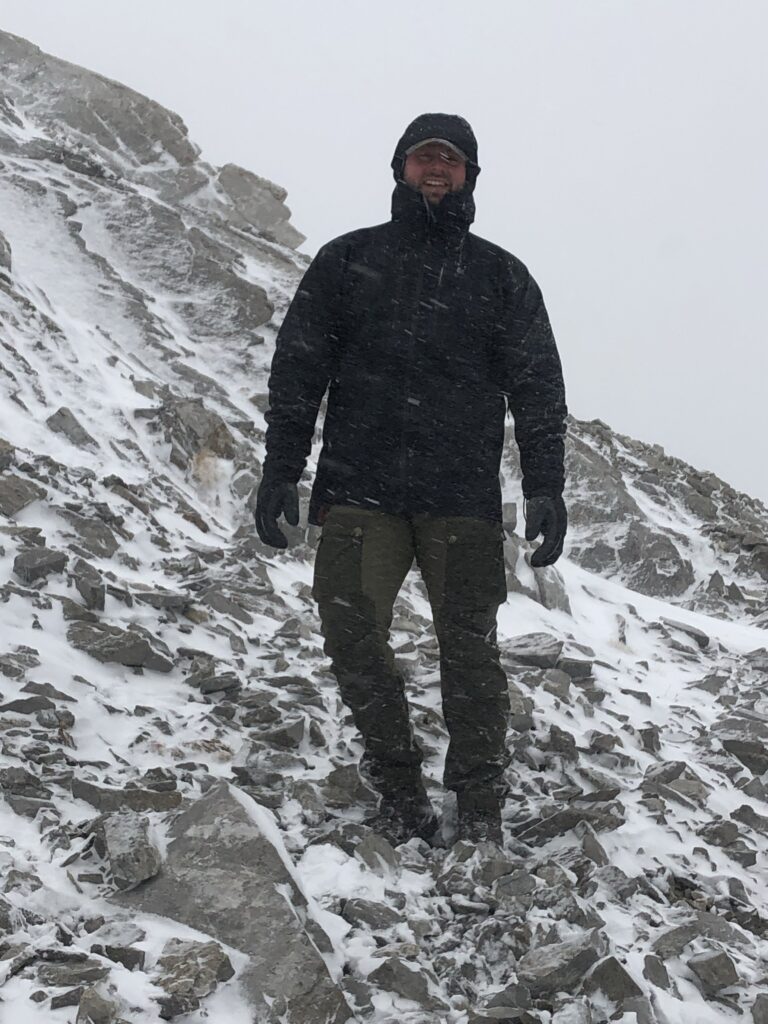
What to Avoid in Winter Hiking Pants
Now that we know what is important in a good pair of winter hiking pants, there are also a few things to avoid to make sure you have the best winter hiking experience possible.
Bulky
If your hiking pants are bulky, such as a snow pant or a ski pant, it’s going to take more effort with every step just to walk. You will be walking with an abnormal heavy gait, which will be harder on your muscles and tendons to bear that burden.
Bulky pants are great for standing around in cold weather, but aren’t great for moving around in cold weather. Try to avoid winter hiking pants that are too bulky.
(Plus, bulky pants make that awful swish-swish noise when you walk. Avoid that noise while you hike to enjoy the sounds of nature instead.)
Too Warm
Believe it or not, it’s better to have hiking pants that don’t keep you too warm in the winter.
If your hiking pants keep you too warm while hiking, you’re simply going to sweat and cause your attire to get wet from the inside out, which is difficult to dry.
Wet clothing will make you cold, which is counterproductive when you were trying to wear clothes intended to keep you warm.
IF your hiking pants don’t have the ability to layer or ventilate for heat control, you might be better off finding a different pair.
Restrictive
If your hiking pants don’t allow you to have your full range of motion, it might not be a problem depending on how difficult your hike is, but you might find yourself taking smaller steps, which likely means you’ll have to walk at a quicker pace to keep up.
It can also be problematic if your hike requires you to take large steps or go up steep inclines. Restricted movements tend to place more strain on the muscles and tendons that take the burden instead and can lead to unexpected soreness.
It’s a safer bet to have freedom of movement when it comes to your hiking pants, solely so you know you’ll be capable of doing whatever it is you need to do on your hike.
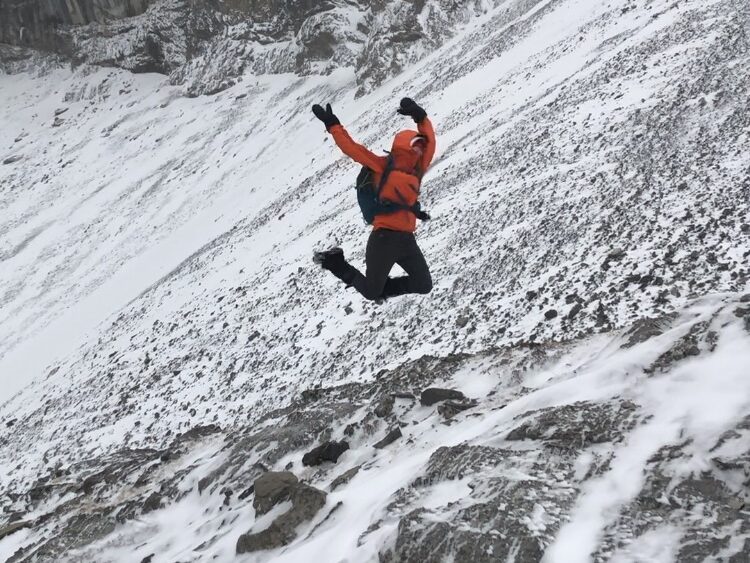
Uncomfortable
If your hiking pants are uncomfortable in any way, you’re unlikely to enjoy your winter hiking experience.
This might be a tightness in the waistband, a tightness around the thighs, too short of an inseam, or any number of issues you might find with the pants.
If you’re trying on pants and think they’re even slightly uncomfortable, it’s best to try another size or style. Pants don’t tend to “break in” the more you wear them, like shoes do, and you’ll probably leave them at home if you don’t enjoy wearing them.
Unflattering
Although it’s not the most important determining factor for winter hiking pants, but if you don’t like the way they look on you, you probably won’t love wearing them.
It’s no secret that a lot of us are motivated by wanting to take a picture at the scenic parts of our hikes or at the final destination. If you don’t like the way you look, that motivating factor might be taken away from you.
If you don’t care how pants look and you’re all about functionality, you can skip this recommendation. I do think something is to be said for feeling good in what we choose to wear, however.
Lots of pants exist in the world, keep searching until you find the size, style, and color that feels right for you.
Snow Pants For Hiking
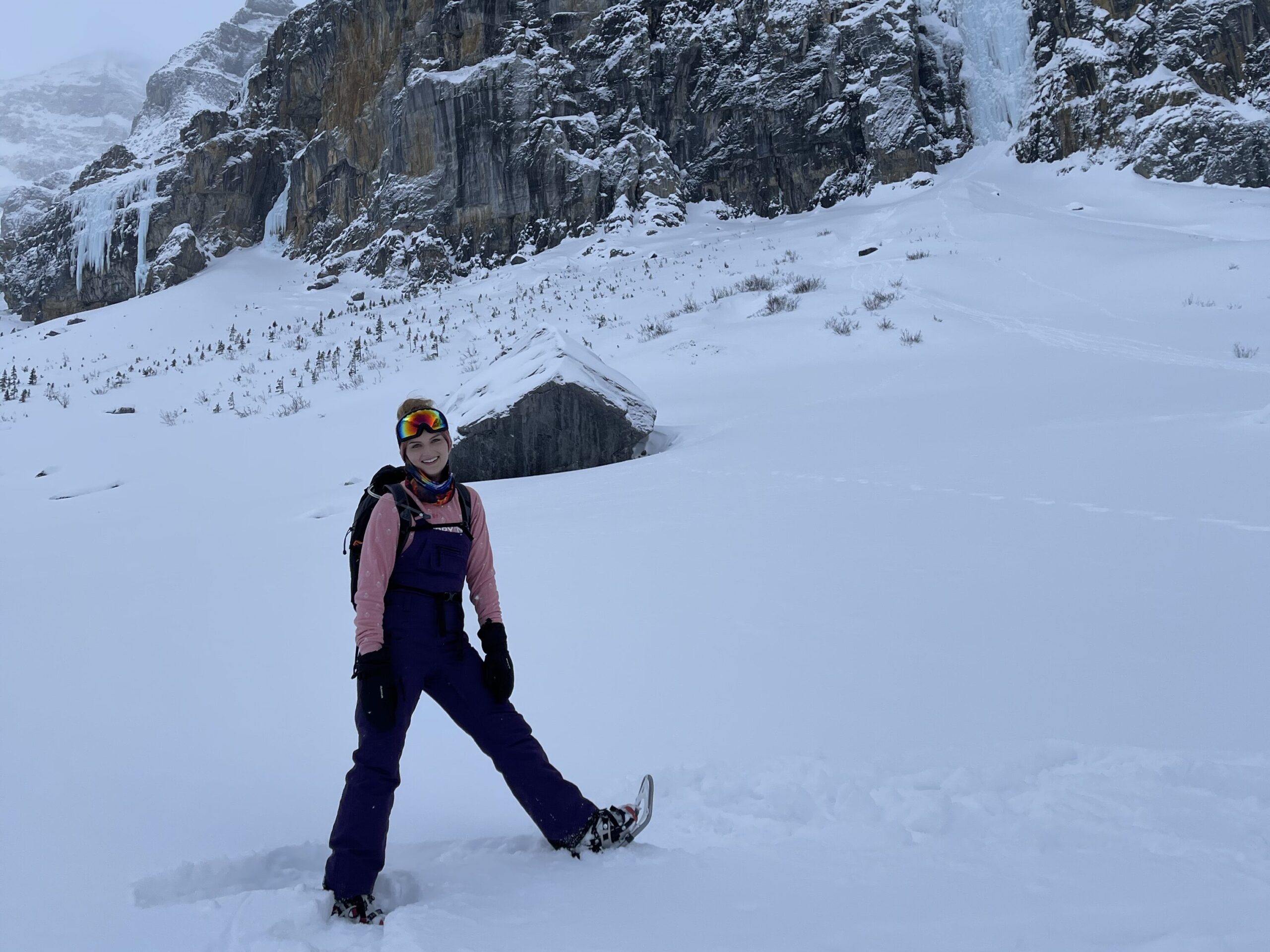
I do not recommend wearing snow pants or ski pants for hiking, though it is a valid option (and one that I have done myself).
Snow pants (also known as ski pants), are bulky, restrictive, and likely too warm for winter hiking.
Bulky snow pants mean that your walking gait will be wider and slower than normal. It will make each step just a tiny bit harder to take, but this hinderance will build up in difficulty over time.
Snow pants are also restrictive, which will make it hard to take big steps, leap over obstacles, as well as sitting down and standing back up. Hiking requires some small amount of flexibility and motion, and snow pants aren’t designed for that.
Snow pants are also typically extremely insulated with fleece or other materials intended to retain heat. This is great when you are standing still or flying downhill on skis, but when you are hiking, you are generating heat. Snow pants will likely make you too warm and cause you to sweat.
Although I don’t think snow pants are the best idea for hiking, if they are the only option you have, they will suffice. Strip off outer layers when necessary to reduce overheating, unzip vents if they exist, and take breaks when needed.
Snow pants will likely perform better as a hiking pant on easier and flatter trails than trails which gain elevation or have difficult terrain.
How To Wear Regular Pants for Hiking in the Winter
If you don’t want to go out and purchase a winter hiking pant, there are ways to make any regular pants work for the winter. Choose any regular pant and follow the recommendations below to wear them hiking in the winter.
On mild days, it’s my preference to wear leggings in the winter. I just ensure to put a base layer below them and gaiters on top. It’s an excellent way to stay comfortable and warm while hiking in the winter.
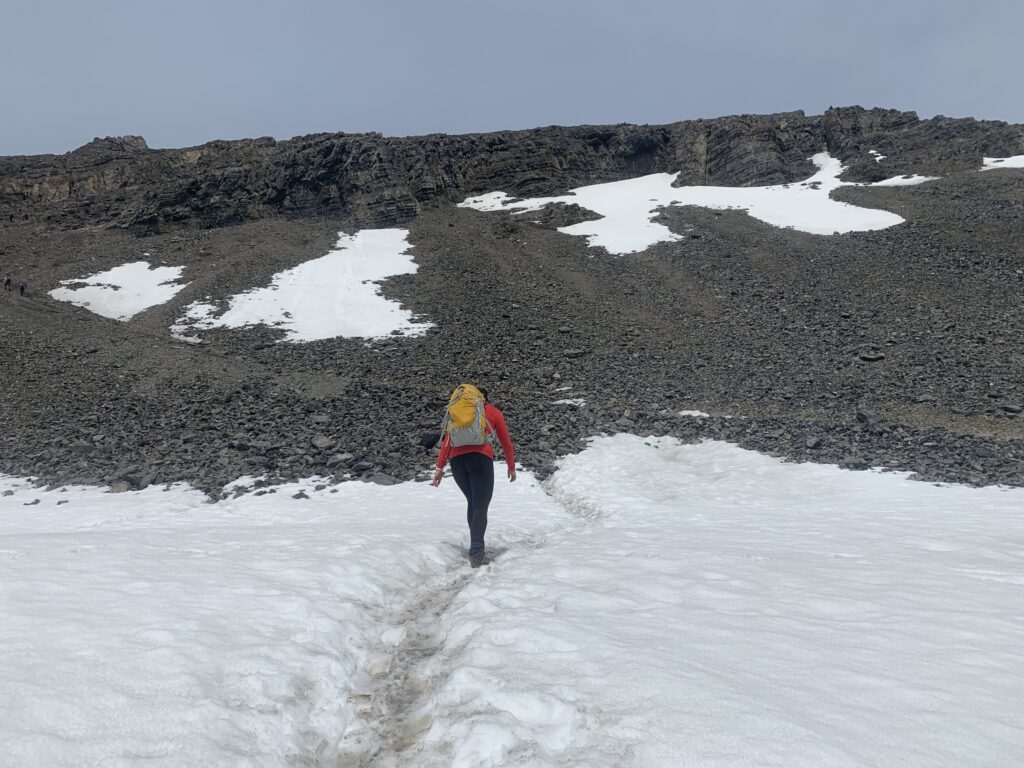
Base layers
The most important factor in a winter layering system is base layers. You should put on a base layer pant before any other layer of pant. The base layer pant should lie next to your skin.
(For more information on what to wear below base layers, click here for my other article.)
Base layers will help to wick sweat away from your skin and regulate your body temperature without causing you to get wet or cold. They are extremely important when considering vigorous activity in cold weather.
You can also double up on base layers. Click here for more information on when to wear two base layers.
Double Up
If you don’t have base layers (and don’t want to spend money on base layers), consider wearing two pairs of pants hiking instead. Double up on the leggings, or wear a sweatpant over a legging if you don’t have better options.
It’s logical to put the tighter pair underneath, but remember to try to avoid cotton or cotton-blend materials, as once they’re wet, they stay wet, and this will cause heat loss.
Gaiters
After your base layer (or layers), you can put on your regular pants that you have chosen to wear winter hiking.
The problem with regular pants is that they are not waterproof. One method of preventing pants from becoming wet is by wearing “gaiters”.
Gaiters are shin-high cuffs that strap around your boots and over your pants. They are reasonably affordable and cinch up around your calves so that you can walk through snow without the moisture soaking the bottom of your pants or getting into your shoes.
If you’re not expecting a crazy amount of snow on the ground or any precipitation in the air, gaiters are an excellent way to wear regular pants hiking in the wintertime.
I always wear my gaiters in the winter, as you never know when you’re going to accidentally step in deep snow. They also provide protection from microspikes snagging the bottoms of your pants.
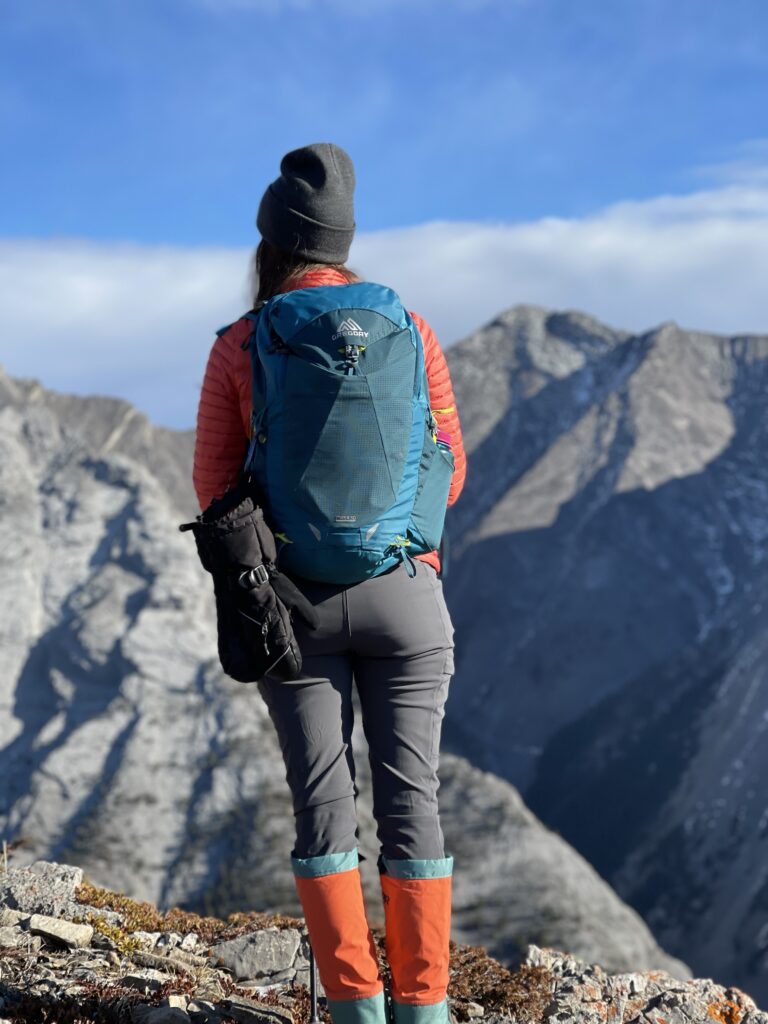
Shells
Another option is to wear a shell over top of your base layers and regular pants to wear them hiking in the winter.
Rain pants are one option, as they are meant to keep moisture out of your pants. They won’t provide any warmth and can actually feel chilled to the touch, but if the temperature is mild, they are a cheap, lightweight, easy option to waterproofing your pants for winter conditions.
Another shell option is known as a “hard shell”. Hard shells are similar to snow pants, but without the interior lining. They don’t provide warmth, but they are more durable than rain paints, and tend to have pockets and ventilation zippers. Hard shell pants are also quite durable.
Look for shells with side zippers from the ankle to mid-calf at the very least. This makes the pants easier to put on and take off without removing your hiking boots.
Questions?
What do you wear for hiking pants in the winter? Drop a comment below and I’ll get back to you!

